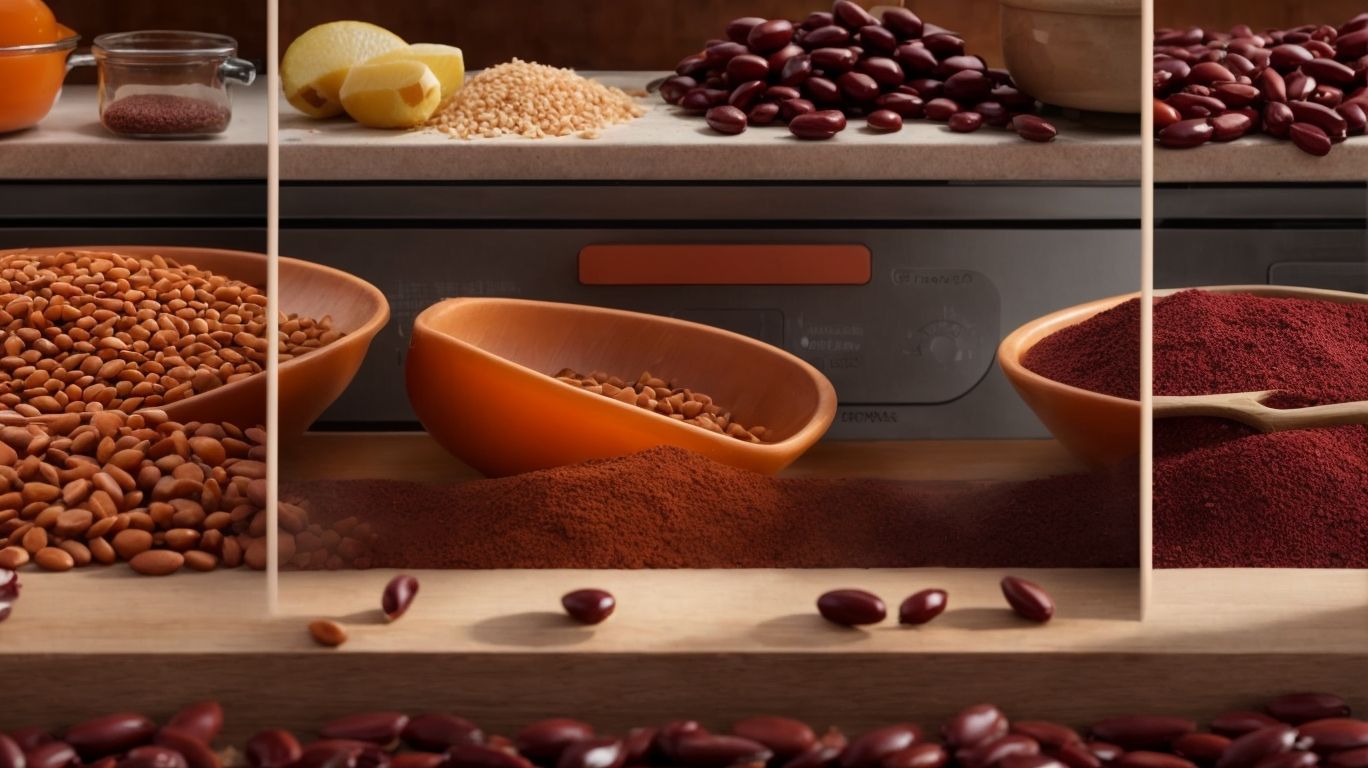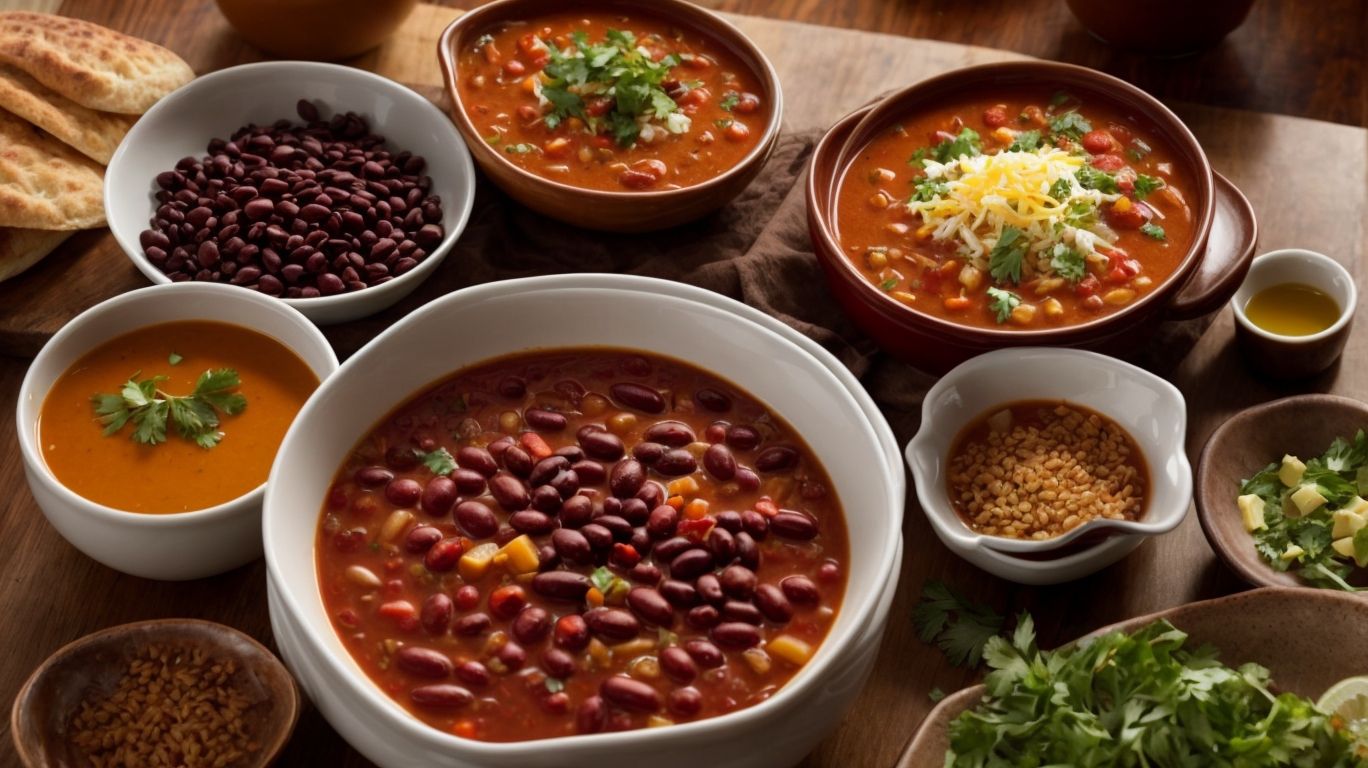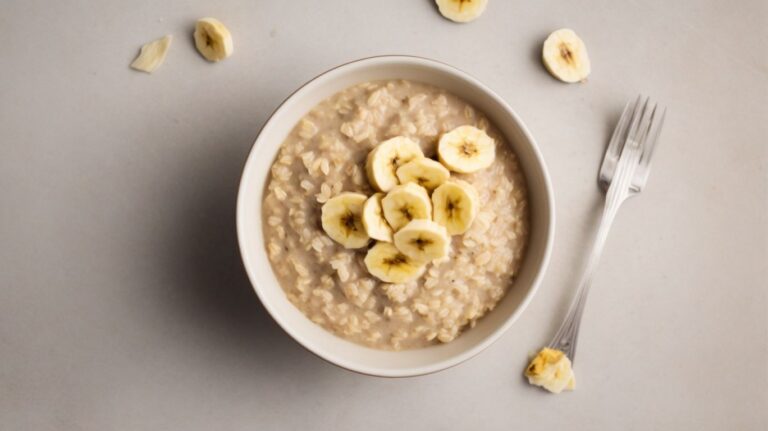How to Cook Kidney Beans?
Are you looking to add kidney beans to your diet but unsure of how to prepare and cook them?
This article will explore everything you need to know about kidney beans – from the different types to the health benefits they offer.
You will also learn various methods to cook kidney beans, how to season them for optimal flavor, and even some delicious recipes to try.
Let’s dive in and elevate your kidney bean cooking game!
Key Takeaways:
What Are Kidney Beans?
Kidney beans are a type of legume known for their distinct shape and rich, creamy texture when cooked.
Kidney beans typically have a soft, velvety exterior with a firm interior, giving them a satisfying mouthfeel that blends well in numerous dishes. Their earthy flavor profile pairs perfectly with a variety of seasonings and ingredients, making them a versatile ingredient in cuisines worldwide. Whether incorporated into hearty stews, zesty salads, or spicy chili recipes, kidney beans add both substance and protein to meals. Plus, they come in various colors ranging from deep red to white, adding a pop of color to any dish.
What Are the Different Types of Kidney Beans?
The different types of kidney beans include red kidney beans, which are the most common variety known for their deep red color and robust flavor.
Red kidney beans are widely popular in various cuisines around the world, especially in dishes like chili con carne, bean salads, and Indian rajma curry. They hold their shape well when cooked, making them ideal for soups and stews. Red kidney beans are a great source of plant-based protein, fiber, folate, and essential minerals such as iron and magnesium.
What Are the Health Benefits of Kidney Beans?
Kidney beans offer a range of health benefits, including being a rich source of fiber, protein, iron, and B vitamins.
Consuming kidney beans can support a well-rounded diet, aiding in weight management and promoting heart health. These beans are particularly beneficial for vegetarians and vegans due to their high protein content. The fiber in kidney beans helps regulate blood sugar levels and promotes digestive health.
- Rich in antioxidants, kidney beans help combat inflammation and oxidative stress in the body, reducing the risk of chronic diseases.
- The iron content in kidney beans supports healthy blood circulation and helps prevent anemia.
- With their abundance of B vitamins, kidney beans contribute to energy production and overall vitality.
How to Prepare Kidney Beans for Cooking?
Preparing kidney beans for cooking involves soaking them to reduce cooking time and eliminate toxins like phytohaemagglutinin.
After rinsing the kidney beans thoroughly, place them in a large bowl and cover them with enough water. Ensure the beans are fully submerged as they will expand during soaking. Allow them to soak for at least 8 hours or overnight. This process softens the beans and helps to break down the complex sugars that can cause digestive discomfort.
- For safety reasons, it is important to discard the soaking water and use fresh water for cooking.
- Toxin removal is crucial as kidney beans contain lectins that can be toxic if not properly cooked.
- Cook the kidney beans in fresh water or broth until they are tender but not mushy.
Soaking Kidney Beans Overnight
Soaking kidney beans overnight is a traditional method that helps soften the beans, reduce cooking time, and enhance their digestibility.
This practice is beneficial for several reasons. When kidney beans are soaked overnight, they absorb water, causing them to expand and soften. This results in a more desirable texture when cooked, as the beans become tender and less likely to remain hard or undercooked. Soaking the beans in water helps to break down complex sugars and reduce the oligosaccharides that can lead to digestive discomfort. The process also accelerates the cooking time, making it more efficient and convenient. Soaking kidney beans overnight can enhance their nutritional value by aiding in the release of vitamins and minerals. This simple step can significantly improve the taste, texture, and overall digestibility of kidney beans.
Quick Soak Method for Kidney Beans
The Quick Soak Method for kidney beans involves boiling them briefly and then letting them sit, accelerating the soaking process for faster preparation.
This technique is particularly useful for individuals who may not have ample time for overnight soaking but still want to enjoy the benefits of cooking with kidney beans. By using the Quick Soak Method, you can cut down the soaking time significantly, reducing it from hours to approximately one hour. This method is not only efficient but also ensures that the beans are adequately softened and ready for cooking, making it a convenient option for quick and easy meal preparation.
What Are the Different Ways to Cook Kidney Beans?

Credits: Poormet.Com – Dylan Nguyen
There are various methods to cook kidney beans, including stovetop cooking, Instant Pot preparation, and slow cooker techniques, each offering different cooking times and results.
Stovetop cooking involves simmering kidney beans in a pot of water for around 60-90 minutes until they are tender. This method allows for easy monitoring and adjustments to the cooking process. On the other hand, Instant Pot preparation significantly reduces the cooking time, requiring only about 30 minutes for soaked beans. The pressure cooker locks in flavors, ensuring a delicious outcome in a fraction of the time. In contrast, slow cooker techniques involve a longer cooking duration of 4-6 hours on high or 8-10 hours on low, resulting in well-infused, flavorful beans perfect for soups and stews.
Stovetop Method for Cooking Kidney Beans
Cooking kidney beans on the stovetop involves simmering them until tender, allowing them to split open slightly for the desired creamy texture.
When simmering kidney beans, it’s essential to ensure they are submerged in enough water or broth to prevent burning while imparting flavor. Keep the heat gentle to avoid explosive boiling, which can cause the beans to burst open prematurely.
Consistently tasting and checking the beans as they cook is crucial to achieve the perfect texture – tender yet slightly firm. A general guideline is to simmer kidney beans for 60-90 minutes, but this may vary based on the freshness of the beans and desired consistency.
Slow Cooker Method for Cooking Kidney Beans
The Slow Cooker Method for cooking kidney beans involves a longer duration of cooking at low heat, resulting in tender beans with a gradual infusion of flavors.
This cooking technique is ideal for kidney beans as it allows the beans to simmer slowly, absorbing all the rich flavors of herbs, spices, and seasonings added.
One of the key advantages of using a slow cooker is the convenience it offers – you can simply set it and forget it, letting the beans cook to perfection without constant monitoring.
The gentle heat of the slow cooker helps in breaking down the tough fibers of the beans, resulting in a creamy texture that is both delicious and nutritious.
Instant Pot Method for Cooking Kidney Beans
Using an Instant Pot to cook kidney beans offers a quick and efficient method that requires less time and ensures safety in the cooking process.
When cooking kidney beans in an Instant Pot, the pressure cooking method significantly reduces the usual cooking time, making it a time-saving option for busy individuals. This ingenious kitchen appliance not only speeds up the cooking process but also helps retain the nutrients and flavors of the beans.
To begin, make sure you have the essential equipment – an Instant Pot, measuring cup, water, and of course, kidney beans. Safety considerations are paramount; ensure the Instant Pot is sealed properly before initiating the cooking cycle and follow the manufacturer’s guidelines to prevent any mishaps during the cooking process.
How to Season and Flavor Kidney Beans?
Seasoning and flavoring kidney beans can be achieved through a variety of spices, herbs, vegetables, and meats to enhance their taste and culinary appeal.
The key to seasoning kidney beans effectively lies in understanding the flavors that complement their earthy taste. Utilizing ingredients like cumin, paprika, garlic, and onion powder can bring a rich depth to the beans’ profile. For a touch of freshness, consider adding chopped cilantro or parsley towards the end of cooking. The versatility of kidney beans allows them to be paired with bold flavors such as chipotle peppers for a smoky kick or with tangy ingredients like limes for a bright finish.
Spices and Herbs to Add to Kidney Beans
Adding spices and herbs like cumin, paprika, oregano, and cilantro can elevate the flavor profile of kidney beans, creating a delicious and aromatic dish.
Each spice contributes a unique taste to the dish. Cumin adds a warm and earthy flavor, while paprika brings a subtle sweetness with a hint of smokiness. Oregano infuses a slightly bitter, zesty note, and cilantro lends a fresh and citrus-like aspect.
When pairing these spices and herbs with kidney beans,
- paprika and oregano create a harmonious combination that enhances the beans’ natural richness.
- Cumin adds depth, while cilantro brightens the overall flavor profile.
For culinary enhancements, consider blending these spices with garlic, onion, and a touch of chili for added complexity. The balance of flavors will complement the hearty texture of kidney beans perfectly, creating a satisfying and flavorful dish.
Vegetables and Meats to Enhance Kidney Beans
Incorporating vegetables like bell peppers, onions, and carrots, as well as meats such as bacon or sausage, can add depth and richness to kidney bean dishes.
In terms of enhancing kidney bean recipes, the key lies in finding the perfect balance of flavors and textures. Bell peppers bring a vibrant crunch, onions offer a savory sweetness, and carrots add a subtle earthy sweetness. On the other hand, meats like bacon or sausage introduce a hearty and smoky element, elevating the overall taste profile of the dish. Pairing these ingredients thoughtfully can result in a delicious and satisfying kidney bean creation that tantalizes the taste buds.
How to Store and Reheat Cooked Kidney Beans?
Properly storing and reheating cooked kidney beans involves refrigerating them for short-term storage, freezing for longer shelf life, and reheating using gentle methods to preserve texture.
When refrigerating cooked kidney beans, it’s crucial to transfer them to an airtight container to keep them fresh and prevent absorption of odors from other foods in the fridge. Remember to label the container with the date of storage to track freshness.
For freezing kidney beans, first allow them to cool completely before portioning them into freezer-safe bags or containers. Try to remove as much air as possible from the packaging to prevent freezer burn.
When reheating kidney beans, avoid using high heat as it can cause them to become mushy; opt for gentle reheating methods such as simmering on the stove or microwaving in short intervals, stirring in between to ensure even heating.
What Are Some Kidney Bean Recipes?

Credits: Poormet.Com – Jordan Adams
Kidney beans are versatile ingredients that can be used in a variety of recipes, including hearty soups, flavorful chilis, and refreshing salads.
These vibrant legumes not only add a delightful texture to dishes but also provide a good source of plant-based protein and fiber. Whether simmered in a rich tomato-based chili, tossed in a zesty salad with fresh herbs and dressing, or incorporated into a cozy soup with aromatic spices, kidney beans bring a robust flavor profile to any meal.
Kidney Bean and Vegetable Chili
Kidney Bean and Vegetable Chili is a delicious and nutritious dish that combines the hearty texture of kidney beans with a medley of vegetables and flavorful spices.
For those seeking a hearty and wholesome meal, this chili recipe is a definite winner. To start off, gather 1 can of kidney beans, 1 diced onion, 2 chopped bell peppers, 3 cloves of minced garlic, and a can of diced tomatoes. In terms of seasoning, you’ll need chili powder, cumin, paprika, and a touch of ground cinnamon. Begin by sautéing the onions and peppers until tender, then add the garlic and spices for a fragrant base. Next, pour in the tomatoes and kidney beans, allowing the flavors to meld together over low heat.
Curried Kidney Beans and Rice
Curried Kidney Beans and Rice is a fragrant and comforting dish that combines the earthy flavors of kidney beans with aromatic spices and fluffy rice.
This flavorful recipe is perfect for a cozy night in or when you want to impress your guests with a comforting and exotic meal. To make this dish, you will need ingredients such as kidney beans, rice, coconut milk, and a blend of curry spices. The key to achieving the rich and harmonious flavors of this dish is in the layering of spices and slow cooking. Start by sautéing onions, garlic, and ginger until fragrant, then add in the spices to toast and release their aromas.
Kidney Bean and Avocado Salad
Kidney Bean and Avocado Salad is a refreshing and nutritious dish that combines the creaminess of avocado with the protein-rich kidney beans and vibrant vegetables.
This colorful salad is not only a feast for the eyes but also a delight for your taste buds. The key to making this dish truly stand out is using fresh ingredients such as ripe avocados, crisp bell peppers, and juicy cherry tomatoes. For the dressing, you can opt for a zesty vinaigrette with a hint of lime juice or a creamy avocado dressing for an extra burst of flavor. Served chilled, this salad makes a perfect side dish for summer barbecues or a light and satisfying lunch on its own.
Frequently Asked Questions
How to Cook Kidney Beans?
Cooking kidney beans is simple and easy! All you need are some basic ingredients and a few key steps to make a hearty and delicious dish.
What is the best way to cook kidney beans?
The best way to cook kidney beans is to soak them overnight in water and then boil them for about 45 minutes to 1 hour. This will soften the beans and make them easier to digest.
Can I cook kidney beans in a slow cooker?
Yes, you can! Soaking the beans beforehand is not necessary when using a slow cooker. Just add the beans, water, and any desired seasonings to the slow cooker and cook on high for 4-5 hours or on low for 8-10 hours.
How do I know when kidney beans are fully cooked?
Fully cooked kidney beans should be tender but still hold their shape. They should not be mushy or fall apart easily. The best way to check is to taste a few beans to see if they are soft and easily chewable.
Are there any health benefits to cooking kidney beans?
Absolutely! Kidney beans are a great source of protein, fiber, and various vitamins and minerals. They also have been linked to promoting heart health and reducing the risk of certain diseases.
Can I freeze cooked kidney beans for later use?
Yes, you can freeze cooked kidney beans for up to 6 months. Just make sure to cool them completely before placing them in an airtight container or freezer bag. Thaw them in the refrigerator before reheating for best results.





